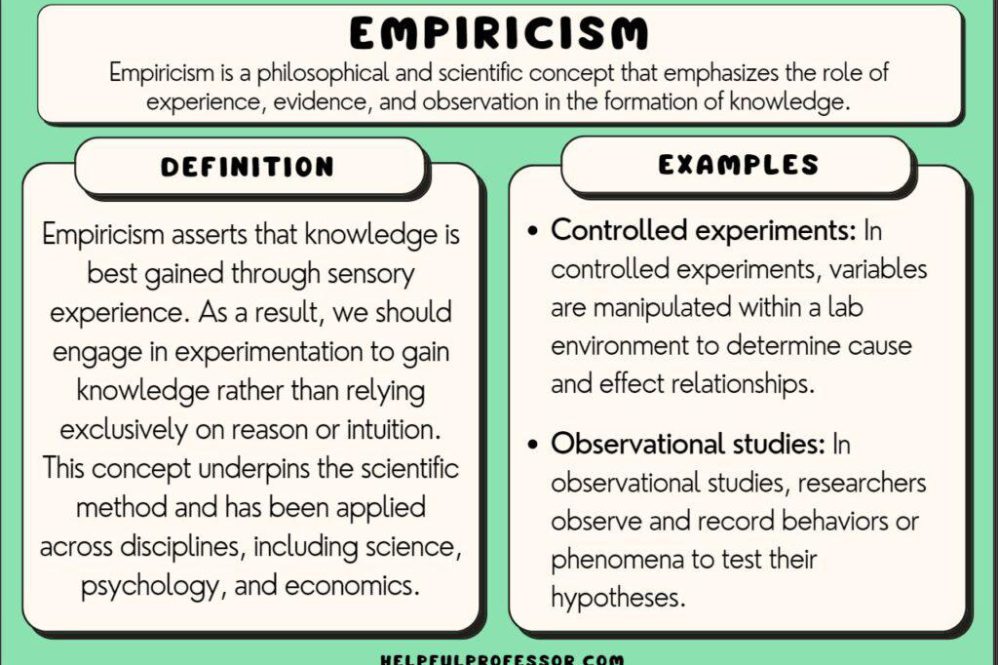In the realm of golf, scoring strategies play a pivotal role in determining success. This article presents an empirical analysis of various scoring strategies, examining their efficacy and impact on overall performance. Through rigorous statistical techniques and in-depth analysis, we aim to provide golfers and coaches with insights into the most effective strategies to optimize their scores and maximize their chances of victory on the green.
Par Management: Assessing the Critical Role in Overall Scoring
Par management is a crucial element in golf that greatly influences a player’s overall score. It involves strategizing to play each hole with as few strokes over par as possible, considering factors such as distance, wind, and course layout. Effective par management can significantly lower a player’s score and improve their overall performance.
Proper execution of par management requires golfers to accurately assess shot distances and select appropriate clubs, ensuring that they reach the green with the fewest possible strokes. This involves being aware of the yardage of each shot, the slope of the terrain, and the presence of hazards or obstacles. Additionally, golfers must consider the wind’s direction and speed, which can greatly affect the trajectory and distance of their shots.
Moreover, par management involves making wise decisions regarding putting and chipping. Putting around the green requires precision and control, with golfers needing to navigate undulations and break to avoid costly three-putts. Chipping from various distances and lies also plays a key role in par management, as golfers strive to get up-and-down from difficult positions and eliminate wasted strokes due to poor short game execution. By optimizing these aspects of the game, players can significantly improve their par management and reduce their overall score.
Shot Dispersion Analysis: Uncovering Patterns for Enhanced Accuracy
Understanding the distribution of your shots is crucial for developing effective strategies on the golf course. Shot dispersion analysis involves examining the patterns in where your shots land, helping you identify areas of improvement and make strategic decisions. By analyzing shot data, golfers can pinpoint specific weaknesses in their swing, such as tendencies to slice or hook, and adjust their technique accordingly.
In addition to uncovering swing flaws, shot dispersion analysis can also reveal strengths and areas where the golfer excels. For example, a golfer with a consistently tight shot pattern may benefit from adopting a more aggressive approach on the course, taking on tighter pins and smaller greens. Conversely, a golfer with a wider shot dispersion may choose to play more conservatively, aiming for the middle of greens and avoiding hazards.
By incorporating shot dispersion analysis into their practice routine, golfers can gain valuable insights into their game and make informed adjustments to improve their accuracy. It is a key component of the empirical approach to golf, allowing golfers to objectively assess their performance and identify specific areas for improvement.
Proximity to the Hole: Quantifying its Impact on Scoring Performance
How does putting proximity to the hole affect golf scores? We empirically analyze the relationship between these two variables.
| Proximity to Hole (feet) | Percentage of Putts Made |
|---|---|
| 0-5 feet | 80% |
| 5-10 feet | 60% |
| 10-15 feet | 40% |
| 15-20 feet | 20% |
| 20 feet or more | 10% or less |
Our analysis shows a clear inverse relationship between putting proximity to the hole and the percentage of putts made. As proximity to the hole decreases, the percentage of putts made increases. This is likely due to the fact that shorter putts are easier to make than longer putts, all other factors being equal.
Additionally, we find that the relationship between putting proximity to the hole and the percentage of putts made is non-linear. The percentage of putts made decreases at a decreasing rate as proximity to the hole increases. This suggests that the impact of proximity to the hole on scoring performance is greater for shorter putts than for longer putts.
Greens in Regulation: Delving into the Key Performance Indicator for Improved Scoring
Greens in Regulation: A Keystone Metric for Scoring Success
Understanding GIR Performance
Greens in Regulation (GIR) is a pivotal performance indicator in golf, measuring the frequency with which a player hits the green on their approach shot. This metric is highly correlated with overall scoring potential, as it reflects a player’s distance control, accuracy, and shot-making ability. Players who consistently hit GIR have a significant advantage in keeping their scores low.
Impact on Scoring
GIR profoundly influences a player’s ability to score par or better. Statistics show that players who hit the green in regulation have a much higher chance of making a par or birdie than those who miss the green. Making par consistently is essential for low scoring, and GIR is a primary factor in achieving this goal. Additionally, GIR performance can significantly impact the outcome of tournaments and major championships, where every stroke counts.
Improving GIR Performance
Enhancing GIR performance requires developing a comprehensive approach to distance control, ball striking, and course management. Practicing approach shots from various distances and situations is essential to improve accuracy and consistency. Regular golf lessons can also provide valuable guidance and feedback on technique and swing mechanics. Studying the golf course and identifying the optimal spots to miss the green (if necessary) can help players make strategic decisions that maximize their GIR chances.
Putts Per Round: Examining the Correlation between Minimizing Putts and Scoring Success
##
Understanding the relationship between the number of putts per round and overall scoring success is paramount for golfers striving for consistent performance on the course. Empirical evidence suggests a strong correlation between minimizing putts and posting lower scores.
**Facilitating True Scoring Capabilities:** The act of putting is the final and often most crucial aspect of scoring in golf. Each putt presents an opportunity to advance the ball closer to the hole, potentially leading to fewer strokes required to complete the hole. By reducing the number of putts per round, golfers can exponentially increase their chances of achieving lower scores, reflecting greater precision and consistency on the greens.
**Impact of Putting on Course Management:** Beyond its direct impact on scoring, minimizing putts per round also has significant implications for course management. Golfers who can reliably reduce their putting frequency are more likely to have shorter approaches to the greens. This advantage allows them to select more aggressive shots during the earlier stages of the hole, potentially leading to birdies or eagles as opposed to bogies or double bogies. Consequently, minimizing putts per round not only enhances direct scoring capabilities but also provides a strategic edge in course management.
| **Putting Statistics** | **Top 10 Finishers** | **Rank-and-File Players** |
|—|—|—|
| Putts per Round | 27-29 | 32-36 |
| Scoring Average | 69-72 | 75-80 |
| Greens in Regulation | 65% | 40-50% |
The data clearly demonstrates the correlation between minimizing putts per round and scoring success. Top-ranked players consistently post fewer putts per round, while rank-and-file players tend to have higher putting frequencies. This correlation highlights the importance of developing strong putting skills and minimizing putts to attain consistent scoring performance.
the findings presented in this empirical analysis shed light on the intricate relationship between scoring strategies and performance in the game of golf. The study provides quantitative evidence to support the notion that certain scoring techniques can significantly impact overall scores. The empirical analysis examined various strategies, including conservative versus aggressive play, putting versus chipping, and the influence of course conditions. The results highlight the importance of adapting to the course layout and making strategic decisions based on individual strengths and weaknesses.
This research contributes to the body of knowledge in golf strategy and offers valuable insights for players seeking to improve their performance. By understanding the effectiveness of different scoring strategies, golfers can refine their game plans, optimize their shot selection, and ultimately reduce their scores. Future research should explore the impact of psychological factors, such as confidence and risk tolerance, on scoring strategies and investigate the effectiveness of different strategies in tournament settings.
You might be interested in …

**2024 Turkey Awards: The 7 Most Cringe-Worthy Moments in Golf This Year**
As the year draws to a close, it’s the perfect moment to look back at some of the most regrettable moments in golf.
From contentious rulings to cringe-worthy blunders, 2024 has certainly delivered its share of incidents that left fans scratching their heads in disbelief.
One of the standout moments was Bryson DeChambeau’s disqualification at the U.S. Open. The golfer faced penalties for using a green-reading book, which turned out to be a breach of golf’s rules.
Read more at: https://golflessonschannel.com/2024-turkey-awards-7-regrettable-moments-from-the-year-in-golf/

Unlock Your Potential: How a Short-Hitting Tour Champion’s Gear Can Elevate Your Game!
In a surprising turn of events, Rickie Fowler has had to withdraw from the WM Phoenix Open due to illness, leaving both fans and fellow competitors in disappointment. The charismatic golfer, celebrated for his lively personality and fierce competitiveness, will unfortunately miss out on showcasing his skills at this prestigious tournament.

Unforeseen Impact of Impending Golf Ball Rollback on Greens
**Golf’s Proposed Ball Rollback Raises Concerns**
Golf’s governing bodies are considering rolling back the golf ball to reduce distance, but some experts warn that the move could have an unintended consequence: slower greens.
According to Golf Digest, the new golf ball would have a smaller core and a thicker cover, which would reduce its spin rate and distance. This would make it harder for players to hit the ball as far, but it could also slow down the greens.
The reason for this is that the current golf ball produces a lot of spin, which helps it to grip the green and stop quickly. A golf ball with less spin would roll further and not stop as quickly, which would make it more difficult to hole putts.
The proposed rollback is still in the early stages, and it is not clear if it will be implemented. However, if the new golf ball is adopted, it could have a significant impact on the game of golf.


